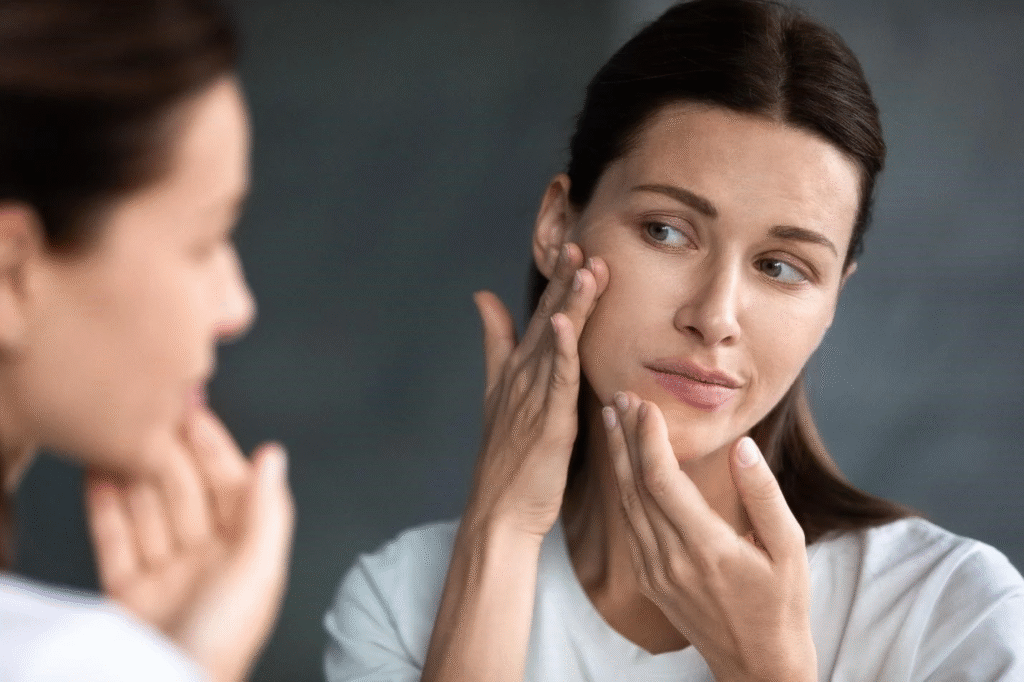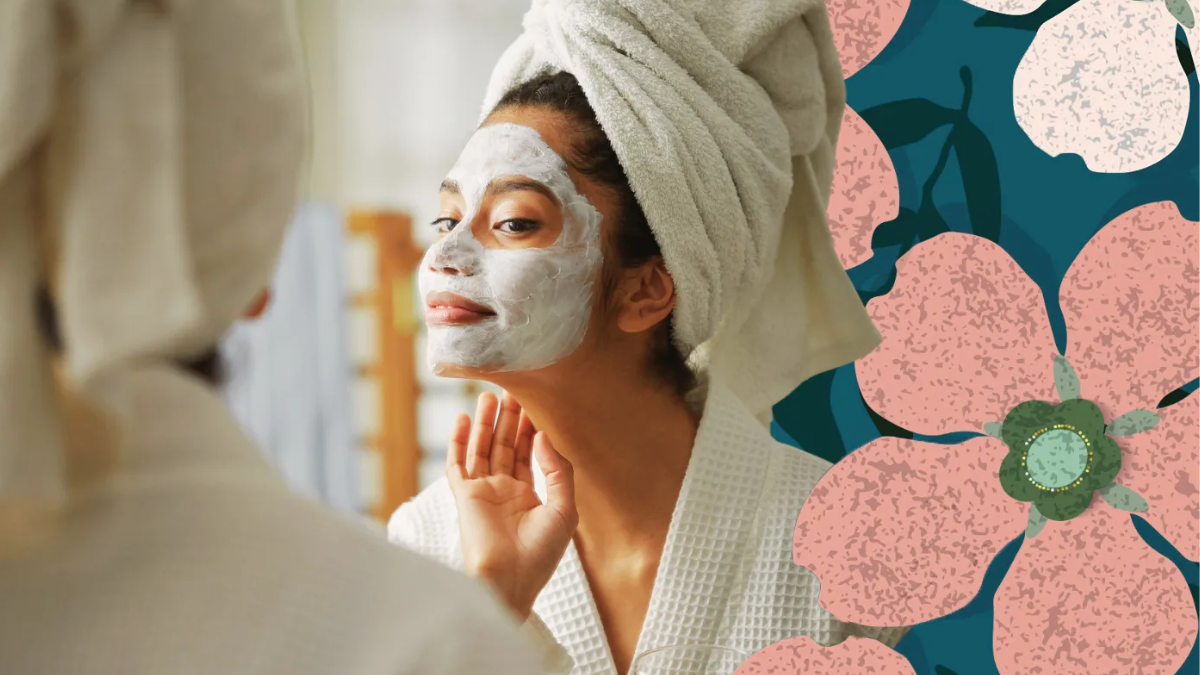Introduction
Beautiful, glowing skin doesn’t happen by chance — it’s the result of consistent care and the right daily routine. Every day, your skin faces dust, pollution, UV rays, and stress. Without proper cleansing and hydration, these factors can cause premature aging, dullness, acne, and loss of elasticity.
A good skincare routine is not about using the most expensive products — it’s about using the right products in the right order and maintaining them regularly. From cleansing to hydration, every step serves a purpose: to keep your skin healthy, balanced, and radiant.
In this complete guide, we’ll break down each step of an effective daily skincare routine, explain why it matters, and help you build a regimen that suits your skin type and lifestyle.
1. Know Your Skin Before You Start

Every skincare journey begins with understanding your skin type, because no single product works for everyone.
The Major Skin Types:
- Normal Skin: Balanced, smooth, and neither oily nor dry.
- Oily Skin: Produces excess sebum, leading to shine and breakouts.
- Dry Skin: Lacks moisture, feels tight or flaky.
- Combination Skin: Oily in the T-zone (forehead, nose, chin), dry elsewhere.
- Sensitive Skin: Easily irritated or reacts to products.
Identifying your skin type helps you choose cleansers, moisturizers, and treatments that work with your skin, not against it.
2. Step One: Cleansing — The Foundation of Every Routine
Cleansing is the most important step in any skincare routine. It removes dirt, oil, and makeup that can clog pores and cause breakouts.
Morning:
Use a gentle cleanser to wash away sweat and oil produced overnight.
Night:
If you wear makeup or sunscreen, try double cleansing — first with a cleansing balm or micellar water, then a water-based face wash.
Tips:
- Use lukewarm water, not hot — hot water strips natural oils.
- Avoid harsh soaps that dry out your skin.
- Cleanse twice daily — morning and night.
Regular cleansing keeps your skin fresh, clear, and ready for the next steps.
3. Step Two: Toning — Balance and Prep
Toners were once considered harsh, but modern formulations are soothing, hydrating, and crucial for balancing your skin’s pH after cleansing.
Benefits of Toner:
- Removes leftover impurities.
- Tightens pores.
- Prepares your skin to absorb serums and moisturizers better.
How to Use:
Apply toner using a cotton pad or fingertips, gently patting it onto your skin — no rubbing.
Pro Tip:
Choose alcohol-free toners with soothing ingredients like rose water, witch hazel, or green tea.
4. Step Three: Serum — Targeted Treatment
Serums are concentrated formulas that target specific skin concerns such as dark spots, wrinkles, acne, or dullness.
Popular Serum Ingredients:
- Vitamin C: Brightens and evens out skin tone.
- Niacinamide: Reduces inflammation and minimizes pores.
- Hyaluronic Acid: Provides intense hydration.
- Retinol: Boosts collagen and smooths fine lines (best for nighttime).
Application Tip:
Use a few drops on clean skin and pat gently until absorbed. Always follow with a moisturizer to lock in benefits.
Serums are like vitamins for your skin — small in size, powerful in impact.
5. Step Four: Moisturizing — Lock in Hydration
Hydration is the key to soft, supple, and youthful skin. Even oily skin needs moisture — skipping it can actually increase oil production.
Types of Moisturizers:
- Gel-Based: Ideal for oily or combination skin.
- Cream-Based: Perfect for dry or mature skin.
- Lotion-Based: Suited for normal or balanced skin.
How to Apply:
- Apply moisturizer while skin is slightly damp to lock in hydration.
- Massage gently in upward motions for better absorption and circulation.
A good moisturizer strengthens your skin barrier, preventing dryness and irritation.
6. Step Five: Sun Protection — The Ultimate Anti-Aging Step
Sunscreen isn’t just for summer — it’s your daily armor against premature aging and skin damage.
Why Sunscreen Is Vital:
- Protects from UVA/UVB rays.
- Prevents wrinkles, pigmentation, and dark spots.
- Reduces the risk of skin cancer.
Usage Tips:
- Choose broad-spectrum SPF 30 or higher.
- Apply 30 minutes before sun exposure.
- Reapply every 2–3 hours if outdoors.
Even on cloudy days or indoors (especially near windows or screens), sunscreen is a must.
7. Step Six: Exfoliation (2–3 Times a Week)
Exfoliation removes dead skin cells that cause dullness and clogged pores.
Types of Exfoliation:
- Physical: Scrubs with fine particles.
- Chemical: AHAs (like glycolic acid) and BHAs (like salicylic acid).
Tips:
- Don’t exfoliate daily — it can damage your skin barrier.
- Always moisturize afterward.
- Avoid scrubs with large or rough granules (like apricot kernels).
Regular exfoliation reveals smoother, brighter, and clearer skin.
8. Step Seven: Nighttime Routine — Recovery and Repair
Your skin repairs itself while you sleep. A good night routine enhances this natural regeneration process.
Night Routine Steps:
- Cleanse (double cleanse if needed).
- Tone (to balance skin).
- Apply treatment serums (like retinol or peptides).
- Use a nourishing night cream or sleeping mask.
Nighttime products are usually richer and designed to boost cell renewal.
9. Additional Skincare Tips for Healthy, Radiant Skin

- Stay Hydrated: Drink at least 8 glasses of water daily.
- Eat Skin-Friendly Foods: Include antioxidants, omega-3s, and vitamin-rich fruits.
- Change Pillowcases Often: Prevents acne and oil buildup.
- Avoid Touching Your Face Frequently: Reduces bacteria transfer.
- Get Enough Sleep: Aim for 7–8 hours of rest each night.
Remember — skincare is a lifestyle, not a one-time fix.
10. The Importance of Consistency
The key to healthy, glowing skin lies in consistency.
Following your daily skincare routine regularly — morning and night — ensures your skin stays balanced, hydrated, and protected.
Think of skincare as an investment. The more consistent you are today, the better your skin will look in the years to come.
Also Read:Essential Skincare Tips for Healthy, Radiant, and Youthful Skin
Conclusion
A complete skincare routine is not about complexity — it’s about balance, protection, and patience.
From cleansing away impurities to hydrating deeply and protecting from sun damage, every step plays an essential role in maintaining healthy, radiant skin.
By understanding your skin type, choosing the right products, and maintaining a consistent daily regimen, you can achieve naturally glowing skin that reflects care and confidence.
Healthy skin isn’t about perfection — it’s about commitment and self-care.
FAQs
Q1. How many steps should a daily skincare routine have?
A basic routine includes cleansing, toning, moisturizing, and sunscreen — 4 essential steps.
Q2. How often should I exfoliate my skin?
1–3 times per week, depending on your skin type and sensitivity.
Q3. Should I use different products for day and night?
Yes. Daytime focuses on protection (SPF, antioxidants), while nighttime focuses on repair (retinol, peptides).
Q4. Can oily skin skip moisturizer?
No. Even oily skin needs hydration — use a lightweight, gel-based formula.
Q5. When will I see results from my skincare routine?
It usually takes 4–6 weeks of consistent use to see visible improvements.

